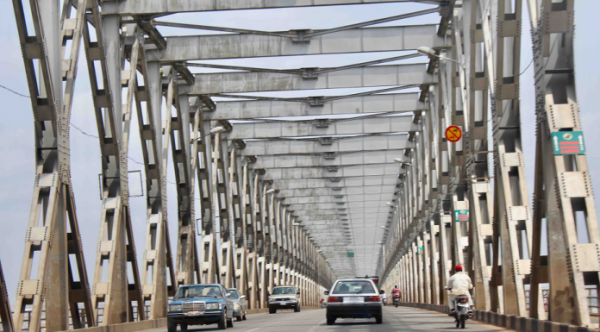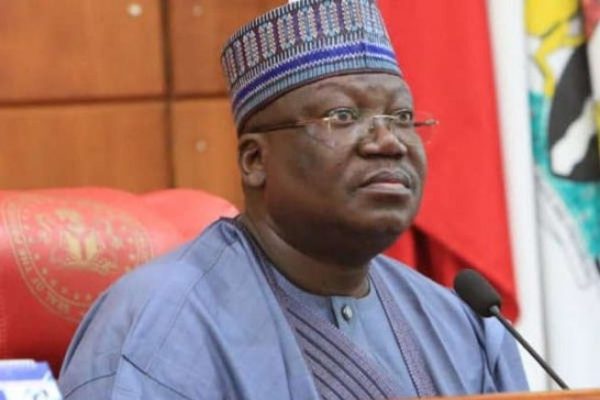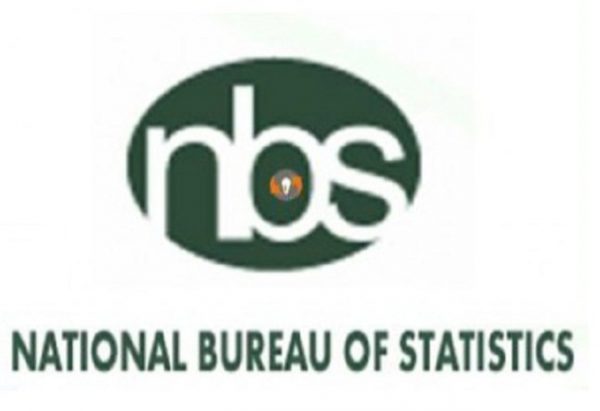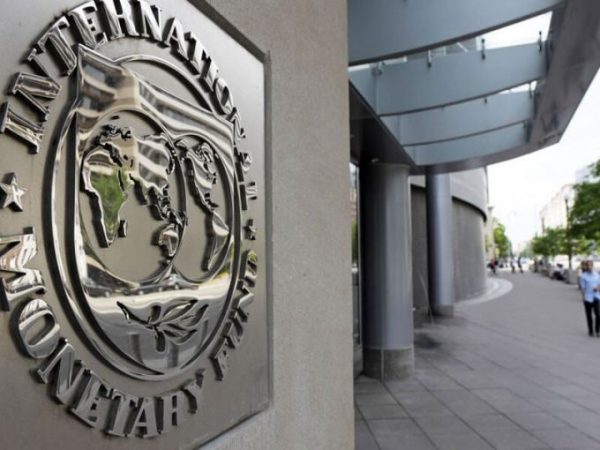With New Funding, Second Niger Bridge Offers Hope of Economic Revolution
 The projected completion of the second Niger Bridge by 2022 is bound to boost the economic potentials of the entire eastern region and the country in general
The projected completion of the second Niger Bridge by 2022 is bound to boost the economic potentials of the entire eastern region and the country in general
The resurrection of construction activities on the Niger River has again kept hopes alive for the people living along the area especially those in Asaba, Delta State and Onitsha, Anambra State, on whose soil the foot of the second Niger bridge stand.
The bridge current has both political and economic significance, helping to spur economic activity in the area and to larger extent the country as a whole, and politically help the eastern region have a sense of belonging in the federation (Federal presence) particularly at a period of growing agitation over the separation of the Igbo people from Nigeria.
However, from the economic perspective, the project was conceived amid the realisation that crossing point between Asaba and Onitsha, which is currently served by the First Niger Bridge, is key to the socio-economic lives and development of people of the South-Eastern region, according to the Managing Director/Chief Executive, Nigeria Sovereign Investment Authority (NSIA), Mr. Uche Orji, while explaining the rationale behind the alternative crossing route.
“The route is a principal facilitator of regional integration, and the primary corridor for the movement of goods and services between the South-west and South-east plus South-south regions of Nigeria.
“The First Niger Bridge was constructed in 1965, i.e. 50 years ago, with a single bi-directional carriageway. However, due to population growth in the area and the high rate of urbanisation, the bridge is now stretched to capacity, especially during peak periods, and as a result suffers continuous strain from excessive vehicular weights during periods of slow/ stationary traffic.”
He said: The Second Niger Bridge (2NB) project was thus conceived to fulfill the following specific needs: Provide an alternative crossing between Asaba and Onitsha within reasonable distance from the current one, which would allow the existing bridge to be shut down for much-needed maintenance without causing significant economic losses to the people of the region; provide congestion relief as well as improved health and safety along the route, with all heavy goods vehicles proposed to be diverted to the new bridge; spur an increase in investments, agriculture and trade (particularly with the Onitsha Main Market) in the region, due to the improved and quicker access and cater for the expected growth in traffic over the next 50 years, resulting from the increased economic activities, population growth and new urban developments.
However, the bridge construction, which commenced in 2014 with some early works had been stalled along the line by funding constraints- particularly the mode of financing, as well as community- related obstacles, leading to criticism from some quarters following the temporary suspension of activities.
Some had even questioned the competence of the contractor to execute the job while other blamed it on witchcraft, which was bent on frustrating the construction over the river.
But, earlier this year, the Minister of Power, Works and Housing, Mr. Babatunde Fashola, was invited to the National Assembly and was grilled on the status of the second Niger bridge.
The minister had among other things, cautioned against the blame game stressing that, “It’s not to lay blame, if not, there is enough to go round.”
According to him:”Nothing is wrong in capacity of the contractor: they are competent by their works.”
Fashola had attributed the stoppage in construction work on the bridge to the financing choices” which were earlier made by government.
He further chided government for not making adequate provisions in the annual budget with which to fund some of its private partnerships including the second Niger bridge.
The minister, giving further insight as to the reasons behind the temporary suspension of work on the bridge, had said:”Since last March, money has not come. And contractors stopped working because…There’s nothing wrong with PPPs…But project is still under construction as it wouldn’t be left fallow…”
Nevertheless, the recent announcement that the much-anticipated second Niger bridge will be completed by February 2022 came as a huge relief to Nigerians, particularly the eastern region.
The project financing partner, the Nigeria Sovereign Investment Authority (NSIA) and the bridge builder, Julius Berger during a joint facility tour of the authority and traditional rulers from both Onitsha and Asaba gave the completion timeline- to the excitement of the host communities and business segment.
The tour further afforded the parties the opportunity to inspect the bridge construction site and the pre-fabrication plants on both sides of the bridge, whose first phase will gulp a total sum of N220 billion.
Orji had during a courtesy visit to the Obi of Onitsha, His Majesty Nnaemeka Alfred Achebe, as well as the Iyase of Asaba, His Majesty, Patrick Isioma Goodluck, assured that the project will be completed by 2022, adding that there will be visible signs of the bridge by the end of 2019 when some concrete slabs would have been positioned.
He based his optimism on the resumption of work following the deployment of capital to key projects under the Presidential Infrastructure Development Fund (PIDF), which was announced recently.
Essentially, the PIDF, an initiative of President Muhammadu Buhari, was designed to facilitate the rapid completion of key infrastructure projects that had been stalled for years and managed by NSIA.
The funds had already been disbursed for construction works on the Lagos-Ibadan Expressway; Second Niger Bridge Project as well as the Abuja-Kano Expressway.
Orji said till date, the NSIA had disbursed N71 billion under the PIDF programme.
According to the NSIA boss, other projects being undertaken under PIDF include the Mambilla Hydro-Power Project and East West Road.
He pointed out that the funding sources for the PIDF included N585 billion from the Nigerian Federation (Federal, State and Local Governments); N97 billion from NSIA, N1,500 billion from export credit agencies, and N372 billion from private investors.
He added that the NSIA was currently working closely with the Federal Ministry of Finance and the Federal Ministry of Power, Housing and Works to ensure proper financing and completion of the projects.
Orji added that all issues pertaining to the sustainability of the funding for the project had now been addressed, through the amendment to the funding structure.
Also, Julius Berger’s Project Director for the 2nd Niger Bridge, Mr. Friedrich Josef Wieser, told journalists that the entire bridge was 16 per cent completed, adding that he was convinced that the project will be completed on February 28, 2022.
Meanwhile, the palace of the Onitsha monarch – as well as his counterpart in Asaba, Orji appealed to the host communities for their continued cooperation for the engineering contractors working at both ends of the bridge.
He added that the visit was to thank the people for past support as well as reiterate government’s unflinching commitment towards the completion of the project.
He also said funding for mobilisation for the Lagos- Ibadan Expressway had just been released.
On the bridge, he said:”The contractor was paid his advance in August and that’s what is pushing us to feel very confident that from where we are, we are on track for the scheduled handover in 2022.”
“We are very confident with the new funding mechanism which increases by way of support from the federal government; then it also allows us when we get to the part that we need private sector participation, which we believe is the fund we will be raising sometime in 2020, it will not be a difficult stretch to raise that private sector portion of the funding.
He said the project had gone from its early works to the main works.
Responding, however, His Majesty Achebe vowed to ensure that peace is guaranteed as the contractors resume work.
He also appealed to the contractors to apply local content principles in the employment of young men and women who are qualified to work at different stages of the work duration to reduce unemployment in the area.
He said, “We are not asking for handouts, but make us feel as part of the project” adding that, there are several people from both Asaba and Onitsha who may have the professional qualifications to take up some of the vacancies in the construction work.
He also affirmed that going by what was seen on ground at the project site, despite the temporary suspension, it had now been established that “this time there is something going on.”
Similarly, His Majesty, Isioma Goodluck, who spoke on behalf of the Esagba of Asaba,also said, “Over the years we heard about this and nothing happened” adding that, “From what I hear happening in the river, we have every cause to commend the Federal government for the efforts being taken.”
He further urged the project handlers to ensure justice in the engagement of qualified indigenes to participate in the project in order to create jobs.
He said the completion of the bridge will aid economic development in the areas as well as the country in general.
He said, “I pray for continued peace, without which there will be no development.
Leaders should promote peace and learn from the mistakes of the past. With proper management, Nigeria will be one of richest. Niger Bridge will boost potential in the Niger area. I am convinced that with completion, economy will be impacted positively. I pray also that the goddess of the river helps you.”







